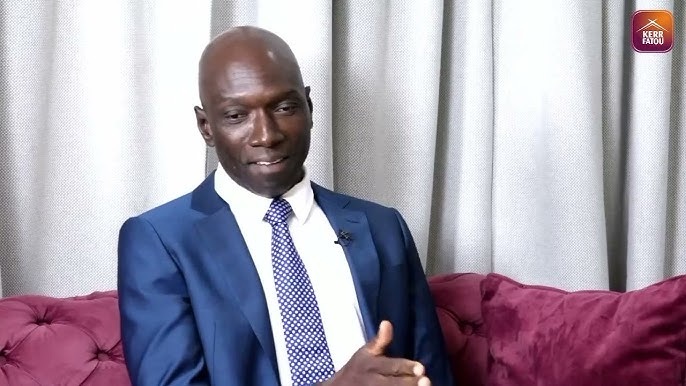Dr. Ousman Gajigo
Any traveler from Basse to the Kombos would notice the sides of the road lined with bags of charcoal and firewood. A few decades ago, one would notice such things only along the West Coast Region. This change is reflective of the high demand for cooking fuel that is being propelled by the general population increase, and particularly by the high urbanization rate. In TheGambia today, about 99% of the population today depend on either firewood or charcoal as their main fuel for cooking.
Needless to say, this high consumption of firewood and charcoal comes at a great cost. The country is experiencing significant amount of deforestation as previously wooded areas are completed denuded. One does not need to be an environmental or climate expert to know that the effects of such a high rate of deforestation doesn’t bode well for the future.
Beyond the obvious adverse environmental effects of deforestation, there are hidden but no less serious health repercussions to constant cooking with firewood and charcoal. The individuals that cook with these fuel sources are exposed to constant inhalation of heavy and fine particulate matters that cause serious health problems including respiratory and eye problems.
There are numerous alternatives sources of fuel that individuals can cook with that are more environmentally sustainable and have less deleterious effects on health. These include electric powered stoves, gas stoves (liquefied petroleum gas – LPG) and briquettes made from renewable biomass.
In the current realities in The Gambia, it is obvious why these alternative sources are in low use. Electricity is highly expensive and unreliably supplied, which rules out electric source for most Gambian households. Despite the availability of well-suited biomass materials such as groundnut shells, rice husks, and woodchips, among others, the current government is completely oblivious to the advantage of this source of sustainable fuel supply. The low supply and the resulting high price of gas, as well as the absence of sensitization efforts, has prevented the widespread use of gas in urban Gambia. As a result, less than 1% of Gambian households depend on gas as their fuel source.
In this article, I will focus on how gas can be an affordable fuel source for cooking for the average Gambian household. It will be seen that it is quite easy to increase the use of this fuel source in our urban areas by simply implementing a few measures that are completely under the control of the government. Some of these measures includes infrastructural investments, while others entail implementing targeted regulations. In the process, the cost of living of citizens can be improved, in addition to the afore-mentioned environmental and health benefits.
One of the major contributing factors for the current high price of gas for consumers is the absence of storage capacity in the country. The country’s current storage capacity of only 1000 metric tonnes is too small for the size of the demand. Without adequate storage, importers are unable to take advantage of economies of scale whereby the cost per unit of items falls as volume increases. Consequences of this limited storage capacity can be seen both in the elevated price level cooking gas and itsunusual price schedule in The Gambia. Currently, the prices of refilling gas bottles of 3kg, 6kg and 12kg are D225, D575 and D1200, respectively, in The Gambia.
There are two things to note about this price. First, it is simplytoo high. Consider that the price of a refilling a 12kg bottle of gas in Senegal is about D740, which is about half the price in The Gambia. It should therefore not be surprising that the majority of households in urban Senegal use gas for cookinggiven its affordability there. Another problem in The Gambia is that the price per kg of gas for the following bottle sizes 3kg, 6kg and 12kg are D75, D95.8 and D100, respectively. In other words, the cost of one kg of gas goes up with quantity in The Gambia, rather than going down. This is abnormal. This abnormal price schedule is mainly a function of very restrictedsupply and it’s crying out for a rectification.
Storage capacity limitation is an infrastructure problem. And like most infrastructure problems, the government is best placed to address the problem. This is because storage space is a public good that private businesses are generally not capable of addressing. By increasing the storage capacity at Mandinaringfor cooking gas, businesses would be able to import greater quantity of gas by sea, which is less costly than trying to import over land by road through Senegal. As businesses are able to supply larger quantities, then the price per kg would fall.
For a nascent market in the country such as cooking gas, increasing the storage capacity will be necessary but hardly sufficient. While the higher supply would encourage more private businesses to enter the downstream gas market, the government would need to play an active role to not only boost supply but increase accessibility of the product to most household.
One effective way in which the accessibility of gas can be enhanced is to re-focus the downstream market interventions of the Gambia National Petroleum Corporation (GNPC) away from the marketing of petrol to the marketing of gas. The downstream petrol market in The Gambia has a lot of private businesses involved and even if the GNPC petrol stations were to cease operating, few would realize it. Moreover, this market is already well-regulated. Therefore, there is no good rationale for the government to be involved in a business activity that the private sector currently does quite well.
The current locations of the GNPC petrol station would helpincrease the accessibility of gas to a greater number of households. The goal of the GNPC entrance in the market is not necessarily to take market share away from the private sector but to help increase accessibility of gas to households in areas where the private businesses would not initially be incentivized to prioritize in their distribution.
There are other relatively minor regulations that would need to be implemented with the above measures. For example, as an initial measure that could be phased out later, the government should subsidize the cost of gas bottles. This would be a limited time measure since these bottles are highly durable that could be used be for years. By subsidizing the initial empty cost of bottles, the affordability for most households would be improved.
Another measure would entail the government putting a regulation in place where households are not locked into refilling their gas with a particular seller just because they made the initial gas bottle purchase from that seller. In other words, gas sellers should not be able to refuse to refill a gas bottle as along as the container is in good condition. After all, gas bottles are standardized in capacity and build, and therefore unnecessary restrictions on refilling needlessly disadvantage consumers.
Another measure that would be needed is the removal of any tax on the importation and selling of gas. Any resulting loss of taxrevenue will be more than compensated for by the reduction of the cost of living for households through more affordable energy cost. After all, the whole point of tax revenue collection is to enable the government to finance development expenditures for the betterment of the people.
These regulations should be accompanied by sensitization initiatives to educate the people about the advantages of cooking with gas relative to charcoal or firewood. This case for this is fairly straightforward and need not focus on environmental effects even though that would be major. This is because the direct financial cost of gas fares favorably well with charcoal. Based anecdotal observation, the average household spends at least D1500 on firewood or charcoal. However, with the above suggested measures, the use of gas for the average household could be reduced by at least 50%.
It is important to highlight that not only would households benefit, a lots of businesses in the food and hospitality sector would benefit as well, resulting in a great spillover effect. The high failure rate of many restaurants in The Gambia can be attributed to the high cost of inputs such as energy. The lower the cost of gas, the higher the success rate of restaurants, and therefore the more people they are able to be employed and the lower the cost of food.
The price difference in gas between The Gambia and Senegal is sufficient evidence to demonstrate that we have significant room for improvement in providing affordable energy for Gambians. The costs of the current inefficiencies in terms of high poverty, environmental destruction and poor health effects are simply too high for the current status quo to remain.





